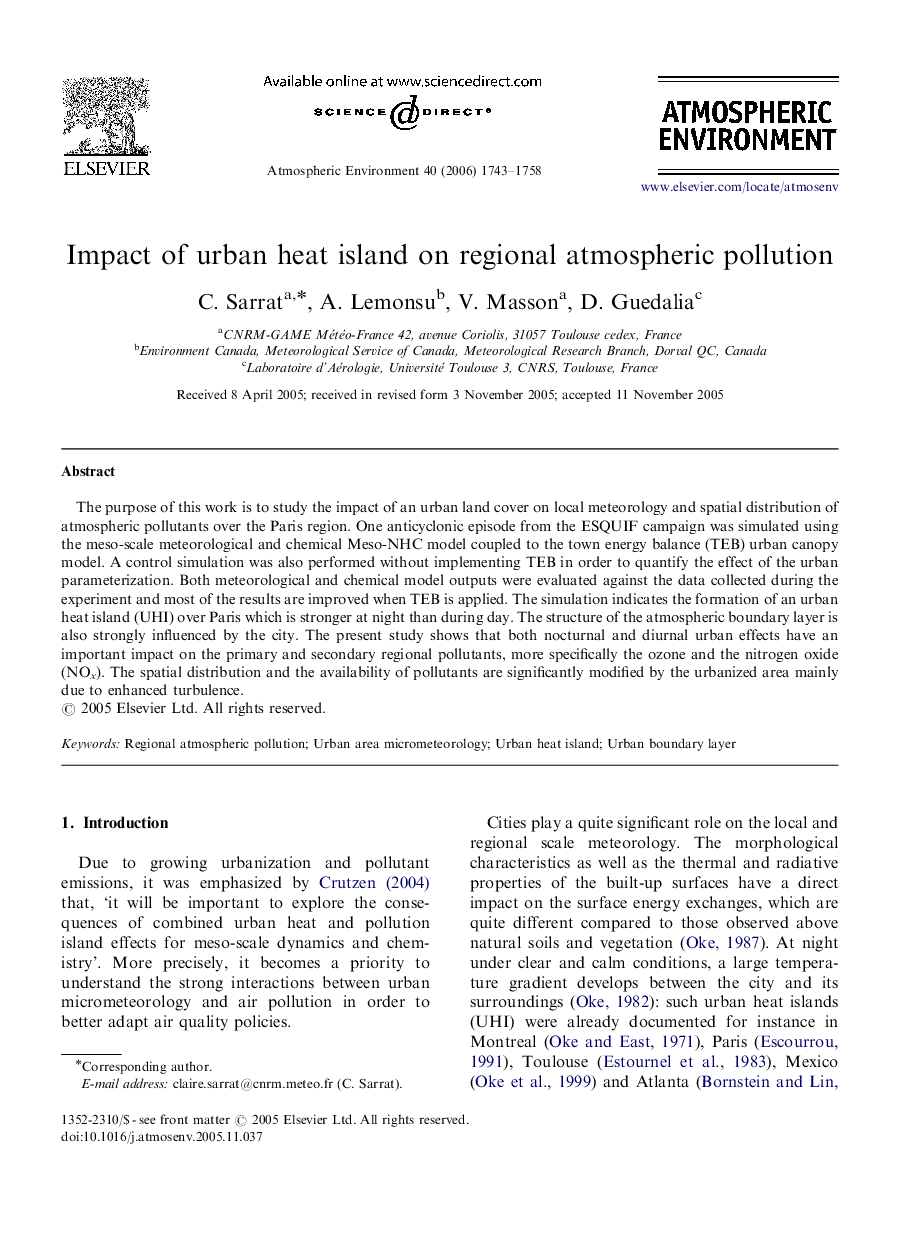| Article ID | Journal | Published Year | Pages | File Type |
|---|---|---|---|---|
| 4444248 | Atmospheric Environment | 2006 | 16 Pages |
The purpose of this work is to study the impact of an urban land cover on local meteorology and spatial distribution of atmospheric pollutants over the Paris region. One anticyclonic episode from the ESQUIF campaign was simulated using the meso-scale meteorological and chemical Meso-NHC model coupled to the town energy balance (TEB) urban canopy model. A control simulation was also performed without implementing TEB in order to quantify the effect of the urban parameterization. Both meteorological and chemical model outputs were evaluated against the data collected during the experiment and most of the results are improved when TEB is applied. The simulation indicates the formation of an urban heat island (UHI) over Paris which is stronger at night than during day. The structure of the atmospheric boundary layer is also strongly influenced by the city. The present study shows that both nocturnal and diurnal urban effects have an important impact on the primary and secondary regional pollutants, more specifically the ozone and the nitrogen oxide (NOx). The spatial distribution and the availability of pollutants are significantly modified by the urbanized area mainly due to enhanced turbulence.
